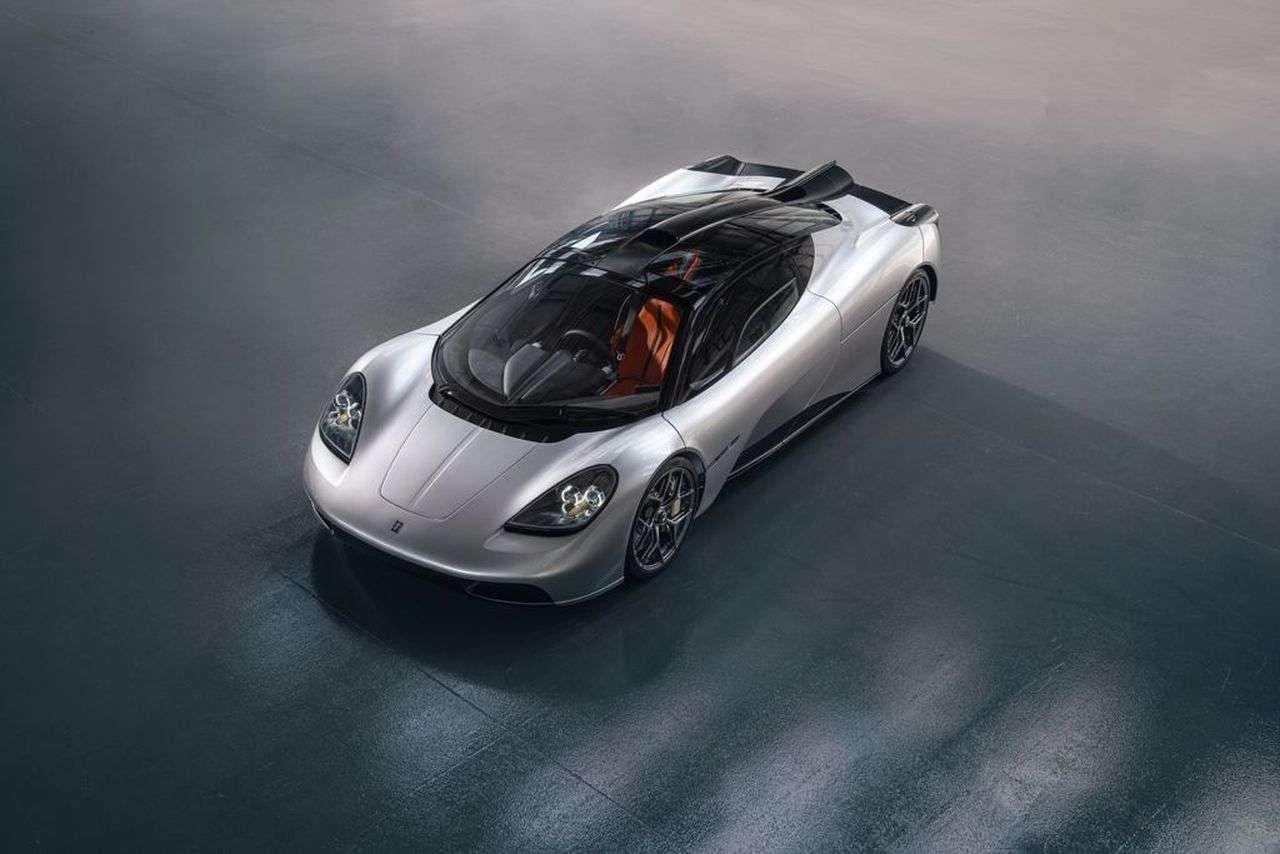GMA
Gordon Murray reveals his £2.36 million GMA T.50 Supercar
In 2019, Gordon Murray – the famous designer behind the legendary McLaren F1 announced that he was building a new supercar. Touted to be the true successor to the McLaren F1, the GMA T.50 supercar was revealed through a digital rendering later that year.
Now, here’s the finished product.

Let’s start with the design – Those dihedral doors and that central driving position are cearly inspired by the McLaren F1. There are no unsightly vents or ducts, nor are there any wings. The car uses a rather unique aerodynamics solution, which we will discuss later.
At its heart is a 3.9-liter, naturally aspirated V12 engine built by Cosworth. The engine produces 654 hp @ 11,500 rpm and 344 lb-ft @ 9,000 rpm. 71% of max torque is available right from 2500 rpm. The engine weighs just 178 kg and is the highest revving naturally aspirated road car engine ever built. It can rev to 12,100 rpm!
The GMA T.50 is based around a carbon fibre monocoque. Along with the carbon body panels, it weighs just 150 kg. The overall weight of the car is 1436 kg. That’s a third lighter than a typical supercar. As a result, the power-to-weight ratio is 663 hp per tonne.

Now, let’s talk aerodynamics –
Walk around the GMA T.50 and you will notice it has a large fan sticking out of its rear end. The rear-mounted 400 mm fan accelerates air passing under the car. The air interacts with the rear diffuser, sucking the car to the ground. This setup increases downforce by 50% and reduces drag by 12.5%.
The T.50 has six different aero modes –
Auto Mode is the car’s default setting. In this mode, the T.50 operates like an ordinary supercar with passive ground-effect downforce.
Braking Mode automatically deploys the rear spoilers to their maximum (+45 degree) angle when high levels of deceleration are required. The fan also operates simultaneously at high speed while the diffuser valves open. This function can double downforce, enhancing stability and grip, and shortening the 150mph-to-0mph braking distance by a full 10 metres. If sudden deceleration is required, and when aerodynamics could influence stopping distance, Braking Mode overrides all other modes.

High Downforce Mode is driver selectable and delivers enhanced traction – in this mode, the rear spoilers deploy at +10 degrees, diffuser valves open, and the fan spools up to increase downforce by 50%.
Streamline Mode cuts drag by 12.5% and boosts straight-line speed while also reducing fuel consumption and downforce. In this mode, the rear spoilers deploy to -10 degrees reducing base suction and drag. The diffuser valves close partially, stalling the diffuser and reducing downforce, which saves wheel travel to make the car more comfortable and efficient. It also sets the fan to operate at high speed, drawing air from the top deck to minimize drag while extending the trailing wake of the car, creating a ‘virtual longtail’ and producing 15kg of thrust.

V-Max Boost is the most extreme T.50 mode. It uses the characteristics of Streamline Mode, then uses the car’s 48-volt integrated starter-generator to drive the fan – freeing up power to the driveshaft. Combined with the ram-air induction, this boosts power to 700PS for short bursts of acceleration.
Test Mode operates when the car is stationary and is driver-selected. The fan spools up to its maximum 7,000rpm, the twin rear spoilers cycle through their full range of movement and the diffuser ducts / valves progressively open and close before returning to their rest position.

Only 100 units of the GMA T.50 supercar will be built, each costing £2.36 million (before taxes). The company will also produce 25 units of a track-only version after the road car production ends.







